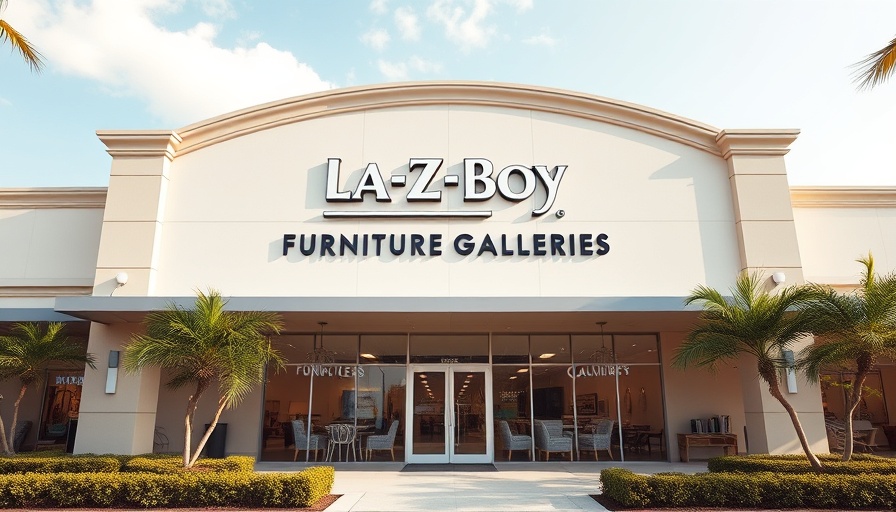
Swinging Stocks: La-Z-Boy's Roller Coaster Week
La-Z-Boy Inc. experienced a wild ride in the stock market recently, painting a vivid picture of the volatility many businesses face today. Initially, the Michigan-based furniture manufacturer saw its shares plunge after releasing fiscal first-quarter 2026 results that fell short of analyst expectations. Revenue dipped 1% year-over-year, landing at $492 million for the quarter. This decline signified underlying market challenges, primarily within La-Z-Boy's wholesale operations.
The Role of Tariffs in Market Dynamics
The tides turned dramatically following President Trump's announcement concerning potential furniture tariffs after a thorough investigation into the sector. This news seemed to momentarily shore up investor confidence, given that La-Z-Boy primarily manufactures goods domestically and thus appears insulated from these tariff threats. Compared to competitors like Wayfair and Restoration Hardware, which rely heavily on overseas production, La-Z-Boy's American manufacturing model emerges as a fortuitous advantage in the face of looming tariff impositions.
Understanding Financial Results: Beyond the Numbers
Despite the temporary stock recovery, La-Z-Boy's underlying financial performance does warrant a more in-depth analysis. The company reported an adjusted operating margin decrease to 4.8%, down from 6.6% from the prior year, alongside a sharp decline in adjusted earnings per share—which fell 24% to $0.47. These figures suggest that, while the retail segment remains robust with a 5% sales increase, the overall health of the company is being challenged by sluggish wholesale demand.
Anticipating Future Opportunities
Looking ahead, La-Z-Boy has set its sights on growth through strategic acquisitions, including an upcoming purchase of 15 stores in the Southeast, aimed at expanding its retail footprint. This acquisition, coupled with the relocation of its Arizona distribution center to a new west coast hub, is part of the broader Century Vision strategy which emphasizes long-term shareholder value amidst fluctuating consumer demand. Although the forecast for second-quarter sales of between $510 million and $530 million remains short of market consensus, the company's clear directional strategies indicate a commitment to resilience and adaptability.
Long-Term Strategies in an Unstable Economy
The current economic climate requires businesses to adopt certain measures to maintain financial health. As La-Z-Boy's CEO, Melinda Whittington, stated, balancing optimism about long-term fundamentals with practical adaptations to current market disparities is vital. By continually assessing its core operations and exploring options for non-core financial pressures, La-Z-Boy demonstrates a proactive approach rather than a reactive stance.
Final Thoughts: Preparing for Unforeseen Challenges
For business owners and facility managers, La-Z-Boy’s situation offers critical lessons. The ability to remain agile in an evolving marketplace—weathering stock fluctuations due to external market pressures—can dictate successful outcomes in your own ventures. Strengthening core operations and seeking growth opportunities, like acquisitions or expansions, can yield resilience during turbulent times.
 Add Row
Add Row  Add
Add 




Write A Comment